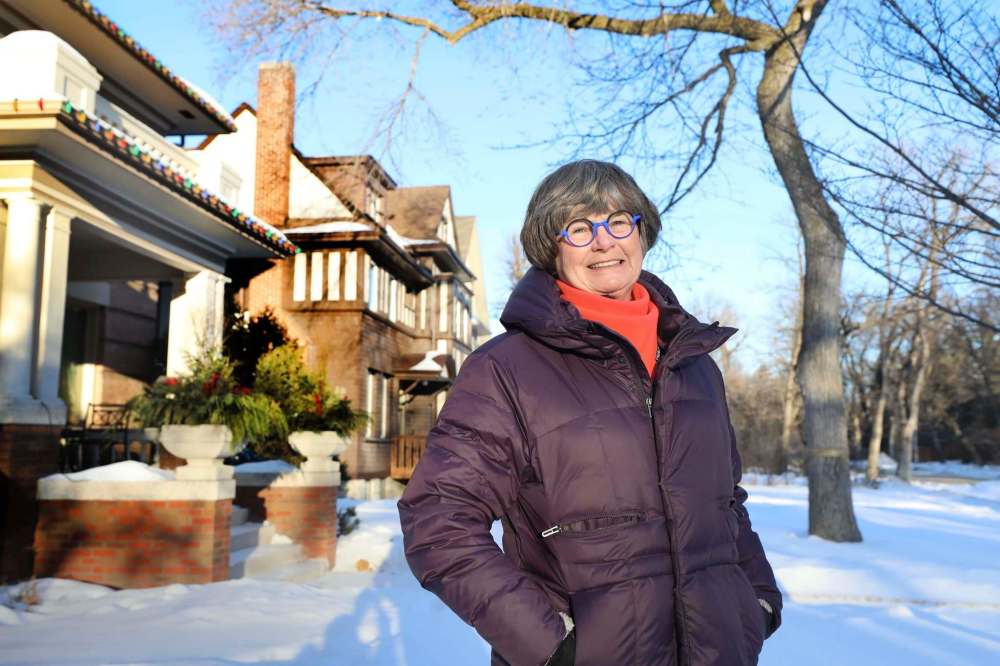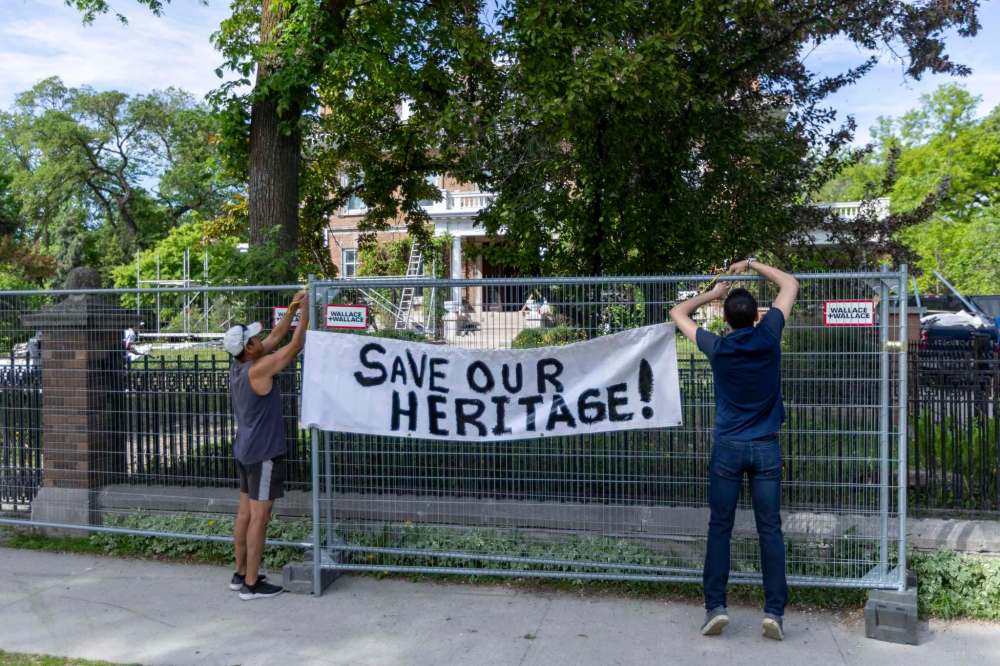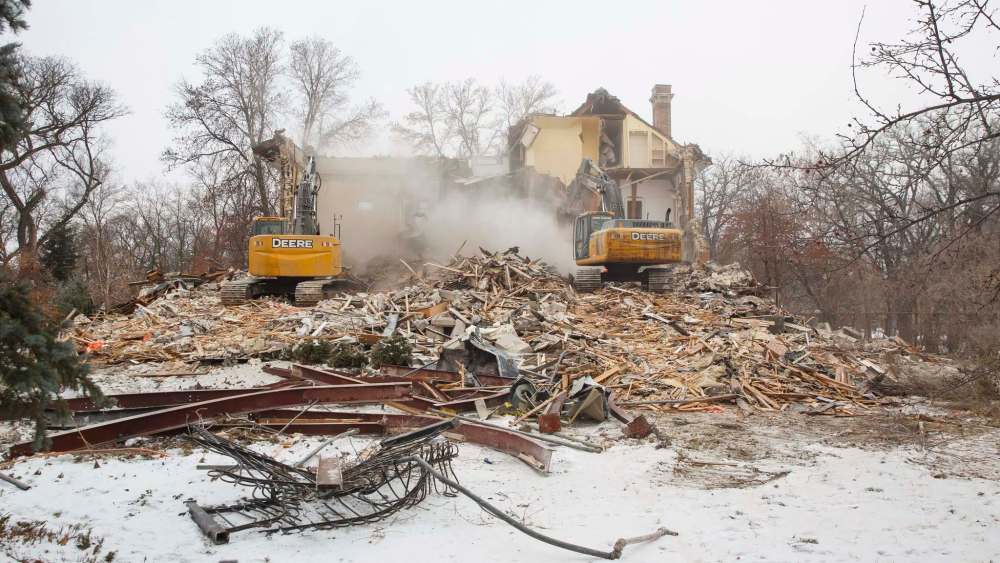To preserve and to protect
Crescentwood moves one step closer to Heritage Conservation District status
Advertisement
Read this article for free:
or
Already have an account? Log in here »
To continue reading, please subscribe:
Monthly Digital Subscription
$1 per week for 24 weeks*
- Enjoy unlimited reading on winnipegfreepress.com
- Read the E-Edition, our digital replica newspaper
- Access News Break, our award-winning app
- Play interactive puzzles
*Billed as $4.00 plus GST every four weeks. After 24 weeks, price increases to the regular rate of $19.00 plus GST every four weeks. Offer available to new and qualified returning subscribers only. Cancel any time.
Monthly Digital Subscription
$4.75/week*
- Enjoy unlimited reading on winnipegfreepress.com
- Read the E-Edition, our digital replica newspaper
- Access News Break, our award-winning app
- Play interactive puzzles
*Billed as $19 plus GST every four weeks. Cancel any time.
To continue reading, please subscribe:
Add Free Press access to your Brandon Sun subscription for only an additional
$1 for the first 4 weeks*
*Your next subscription payment will increase by $1.00 and you will be charged $16.99 plus GST for four weeks. After four weeks, your payment will increase to $23.99 plus GST every four weeks.
Read unlimited articles for free today:
or
Already have an account? Log in here »
Hey there, time traveller!
This article was published 25/01/2021 (1731 days ago), so information in it may no longer be current.
Crescentwood is one step closer to becoming a Heritage Conservation District (HCD), a status given to areas with a high concentration of heritage value, historical significance, and character-defining attributes.
Earlier this month, the city’s property and planning committee directed the public service to prepare a plan to make the neighbourhood — one of the city’s oldest and most desirable — an HCD, a move that will have implications on the area’s future and comes on the heels of years of advocacy by residents.
“We’ve been working toward this for ages,” said Christine Skene, who’s lived on Kingsway Avenue for 30 years in a home her husband’s family has owned since 1909, and is a member of the Crescentwood HCD committee.

In 2018, council introduced a bylaw to formalize the nomination, evaluation and designation of the districts. If the plan for the district is approved, the bylaw states that alterations to “character-defining” elements of the district — not just the public-facing aspects of homes, but streetscapes and green space — would require a heritage permit.
In Crescentwood, those elements include an intact residential neighbourhood over 100 years old, planned public green space, urban forest with old-growth vegetation, and a historical ownership that included some of the city’s founders and most prominent families.
The city defines these districts as “a way to recognize and celebrate Winnipeg’s past” as well as a means to “conserve special and distinct heritage attributes, guide growth and change, (and) enhance community identity, pride, and involvement.”
Such designations also regulate demolition, and establish guidelines for infill buildings. They don’t regulate land use or density, such as converting a property into a duplex, as that is done through a regular zoning process. Armstrong’s Point, a gated community southwest of West Broadway, became the first HCD in Winnipeg in 2019.
In Crescentwood, and its abutting Enderton Park area, some residents like Skene say the designation is exactly what’s needed to keep the neighbourhood’s unique history intact, especially as the manorly homes dating back to the turn of the 20th century and the Great War era become rarer entities each year.
Skene said a heritage district status would serve as an added layer of protection for those character-defining homes, something she says a home at 514 Wellington Cres., known as the Gordon Residence, could have used before its demolition late last year. Homes like that should be preserved, she said.

However, there are those who disagree with the idea, the city’s report said. In total, 31 of 123 property owners within the proposed boundaries filed letters in response to the proposal for heritage district status. Twenty-three were in favour, but eight opposed, citing concerns over an impact on renovation, modernization or sale of personal property, as well as the high cost of preserving buildings and a limit on densification.
The neighbourhood has long been one of the city’s residential real estate market’s busiest and most desirable. (As of Jan. 21, detached single-family homes for sale ranged in price from $579,000 to over $1.6 million.) Some detractors argue that the added designation will discourage development of newer homes, caving into nostalgia instead of moving forward.
Skene said most of that opposition comes from a lack of knowledge over what the designation means: it’s not an all-out prohibition, but an added layer of protection leading to possible prohibition, and it doesn’t negate interior renovations or non-public facing additions.
Area Coun. John Orlikow says research found 76 per cent of the homes in the area were built prior to 1926, with numerous significant architects contributing their designs. Creating a plan would allow the community to grow “in a way that preserves this part of Winnipeg’s history for all Winnipeggers,” he wrote in an email.
As it enters the planning stages, which includes community consultation, the Armstrong’s Point plan — available on the city’s website — provides insight into what the designation could mean, including: encouraging use and adaptive reuse of existing buildings and infrastructure, avoiding loss of individual heritage buildings and structures or streetscapes and landscapes, and ensuring new buildings and additions to existing buildings are consistent with the neighbourhood’s heritage values.
“Where demolitions or removal of character-defining elements are contemplated, applicants must submit permit drawings and information that include details of new buildings or modifications to existing buildings,” the plan notes. Major work plans like demolition or new housing construction should also be accompanied by evidence of community consultation with nearby owners as well as the community at large.

Meanwhile, other work — minor repairs, interior alterations — doesn’t require a permit, per that neighbourhood’s 54-page plan, which thoroughly explains the implications of the district status.
For Crescentwood, the implementation of similar guidelines would require its own heritage plan to be passed and approved by the city, something Skene hopes can be achieved within the next year.
ben.waldman@freepress.mb.ca

Ben Waldman is a National Newspaper Award-nominated reporter on the Arts & Life desk at the Free Press. Born and raised in Winnipeg, Ben completed three internships with the Free Press while earning his degree at Ryerson University’s (now Toronto Metropolitan University’s) School of Journalism before joining the newsroom full-time in 2019. Read more about Ben.
Every piece of reporting Ben produces is reviewed by an editing team before it is posted online or published in print — part of the Free Press‘s tradition, since 1872, of producing reliable independent journalism. Read more about Free Press’s history and mandate, and learn how our newsroom operates.
Our newsroom depends on a growing audience of readers to power our journalism. If you are not a paid reader, please consider becoming a subscriber.
Our newsroom depends on its audience of readers to power our journalism. Thank you for your support.

